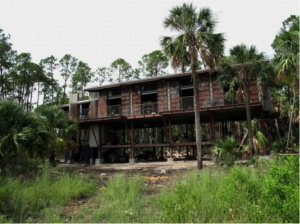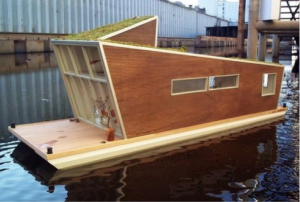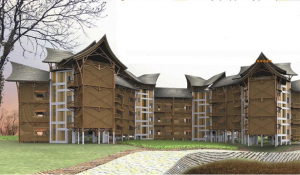 In Fall 2012, Hurricane Sandy devastated the eastern coast affecting thousands of homes and causing billions of dollars in infrastructure damage in the United States. What was less reported during this natural disaster was that Hurricane Sandy also hit Haiti and other parts of the Caribbean that were already vulnerable from past natural disasters. The Federal Emergency Management Agency (FEMA) has recommended that affected U.S. communities rebuild using climate mitigation techniques, such as incorporating permeable surfaces and home elevation into redevelopment plans. Currently, there are no organizations like FEMA in place that create general guidelines for building resiliently but there have been concepts proposed for building storm proof homes that could be possibly adapted for a Caribbean context.
In Fall 2012, Hurricane Sandy devastated the eastern coast affecting thousands of homes and causing billions of dollars in infrastructure damage in the United States. What was less reported during this natural disaster was that Hurricane Sandy also hit Haiti and other parts of the Caribbean that were already vulnerable from past natural disasters. The Federal Emergency Management Agency (FEMA) has recommended that affected U.S. communities rebuild using climate mitigation techniques, such as incorporating permeable surfaces and home elevation into redevelopment plans. Currently, there are no organizations like FEMA in place that create general guidelines for building resiliently but there have been concepts proposed for building storm proof homes that could be possibly adapted for a Caribbean context.
Elevated Homes (pictured above)
The concept of elevated homes is not a new one and essentially involves building homes on support columns that are above the flood level of the area, thereby having water past under the home instead of through it. The process, however, can be extremely costly and only a temporary fix if the elevation does not take into consideration potential sea rise overtime.
Floating homes are designed to remain on the water while being securely tethered to a location. The floating vessel is able to absorb wave impacts, mitigating direct impacts on the house. In serious cases, the homes can simply be moved to a new location to avoid storm damage. While this concept already exists in countries that have waterfront exposure, as in the Netherlands and in Vancouver, it remains to be seen whether this concept could be applied on a larger scale in a cost-effective manner for countries with poorer economies.
‘Disaster Proof Core’
A project proposed by a group of Indian architects, who won the Design Against the Elements 2011 competition, was the ‘disaster proof core.’
This design suggests that a low-income house be built with a cost-effective material, such as bamboo, while having a disaster resistant core that contains essential utilities like water and electricity lines. in the case of the disaster, the bamboo could be quickly and cheaply replaced without interruption of important utilities.
There are already a plethora of flood mitigation techniques that exists and could be applied in a place like Haiti or the Dominican Republic. What is left to be determined is the form in which these designs can be implemented in communities with other issues such as soil erosion and deforestation that exacerbate flooding conditions during natural disasters. Large overarching mandates for flood mitigation design may not be a successful as finding a way to engage communities on a one-to-one basis on how they envision protecting their homes for the future.




About The Author: Daphne Lundi
More posts by Daphne Lundi